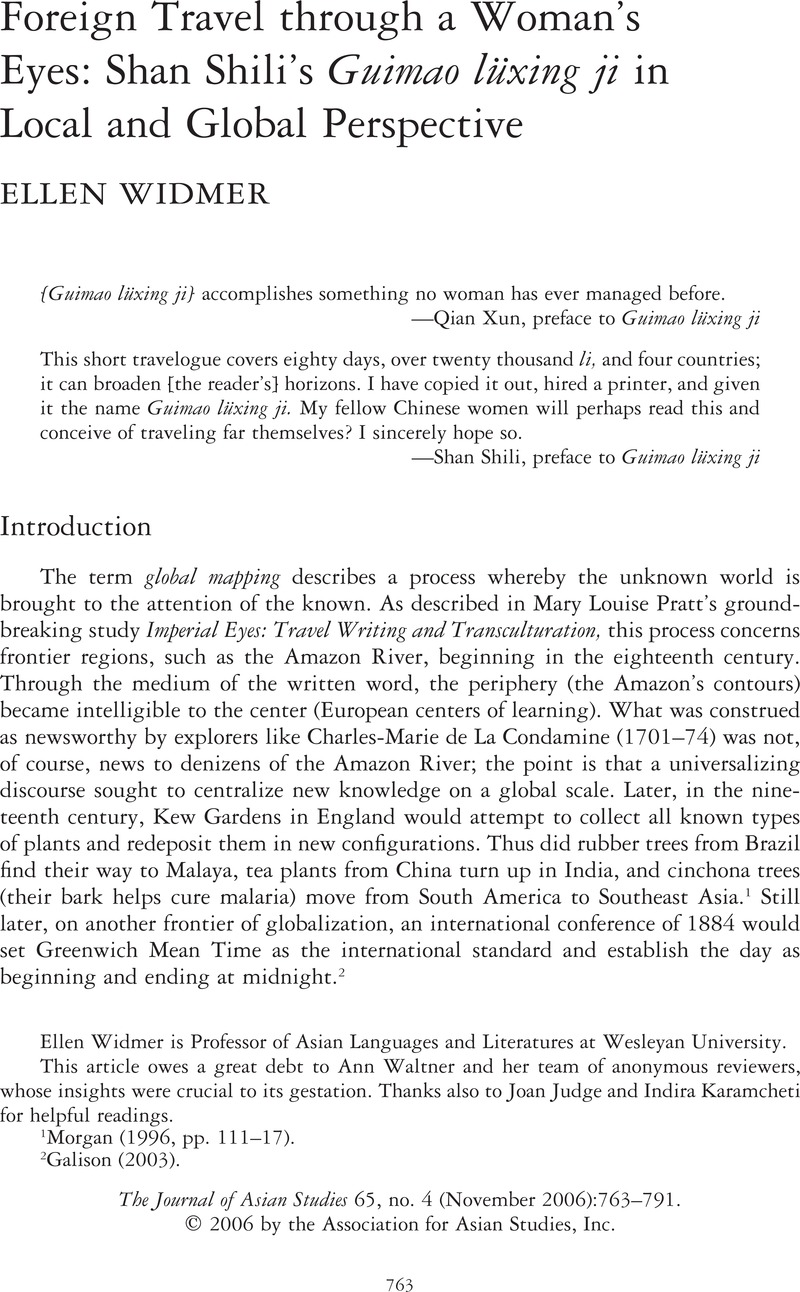Crossref Citations
This article has been cited by the following publications. This list is generated based on data provided by Crossref.
Widmer, Ellen
2011.
Zhan Kai and Five “Novels of Women’s Liberation” of the Late Qing.
Frontiers of Literary Studies in China,
Vol. 5,
Issue. 4,
p.
537.
Guo, Yulei
2014.
Chinese women and travel: Historical and contemporary experiences.
Annals of Tourism Research,
Vol. 46,
Issue. ,
p.
179.
Brezzi, Alessandra
2016.
Some artistic descriptions and ethical dilemmas in Shan Shili’s travel notes on Italy (1909).
International Communication of Chinese Culture,
Vol. 3,
Issue. 1,
p.
175.
Seow, Dana
and
Brown, Lorraine
2018.
The solo female Asian tourist.
Current Issues in Tourism,
Vol. 21,
Issue. 10,
p.
1187.
Tian, Xiaofei
2019.
The Cambridge History of Travel Writing.
p.
175.
Fan, Xiangli
Wang, Jingqiang
and
Xiao, Honggen
2021.
Women's travel in the Tang Dynasty: Gendered identity in a hierarchical society.
Annals of Tourism Research,
Vol. 89,
Issue. ,
p.
103231.
Li, Xiaorong
2023.
Where Have All the Guixiu Gone? Chinese “Women of Talent” at the Turn of the Twentieth Century.
Journal of Chinese Literature and Culture,
Vol. 10,
Issue. 1,
p.
81.
Muldoon, Meghan L.
Witte, Alexandra
Guan, Siqi
Fang, He Yao
Xie, Yuxin
and
Zhou, Liting
2023.
Gendered tourism experiences in China: exploring identity, mobility, and resistance online.
Annals of Leisure Research,
Vol. 26,
Issue. 3,
p.
433.
Gao, Yuan
2025.
From
Junzi to Mingshi
: dual approaches to representing European women in late nineteenth-century Chinese travel accounts
.
Studies in Travel Writing,
p.
1.
Ho, Clara Wing-chung
2025.
A History of Aging in Qing China.
Vol. 9,
Issue. ,
p.
131.



